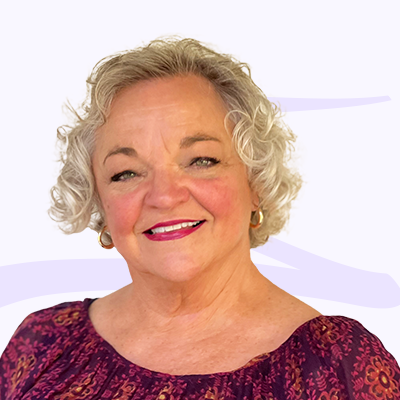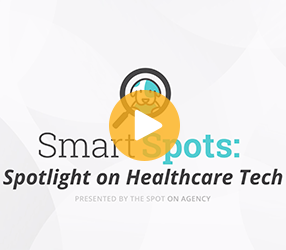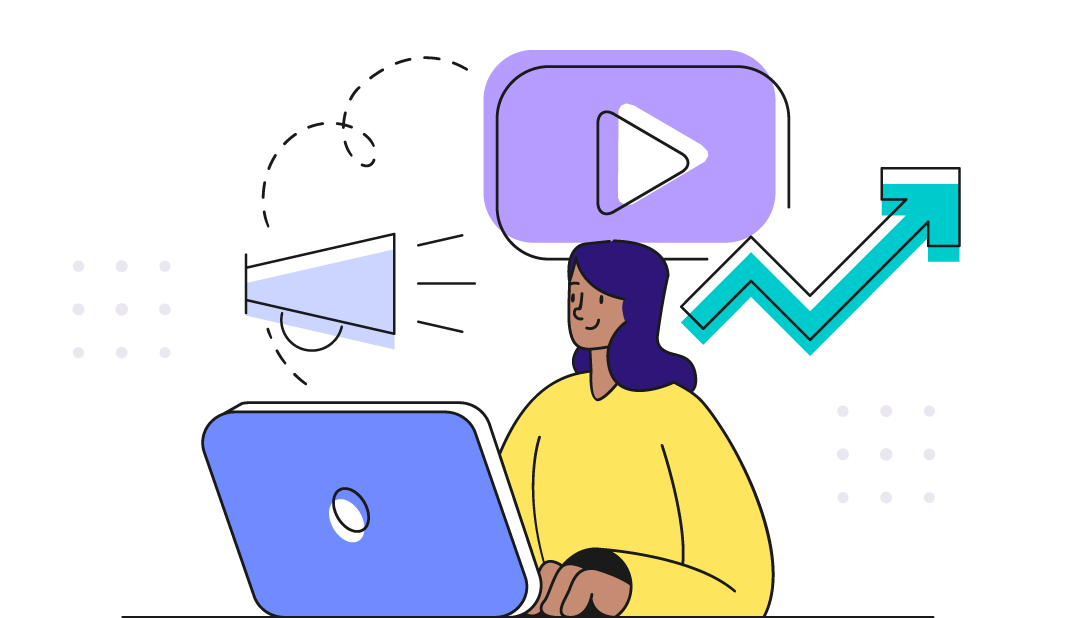



In this week’s Smart Spot, we're sharing an interview between Susie Kelley and Dr. Arlen Meyers, professor of otolaryngology, ear, nose and throat surgery at the University of Colorado, as well as the President and Co-Founder of the Society of Physician Entrepreneurs.
For healthcare technology companies, you’ll find this conversation valuable for learning about some of the latest innovations in healthcare tech and how this is impacting the healthcare system overall.
Susie: Hi, this is Susie Kelley and this is Smart Spots in Healthcare. And today we have Dr. Arlen Meyers as our guest. Dr. Meyers, would you tell us a little bit about yourself?
Dr. Meyers: Sure. Thanks for having me. I'm an emeritus professor of Otolaryngology, ear, nose and throat surgery at the University of Colorado in Denver. I spent my entire academic career as an academic surgeon. I did that for about 40 years. During that period of time, I got involved in technology commercialization, and we can get into that later, but after I retired as an academic surgeon, my encore career is helping people commercialize their life science ideas. So I'm the President and cofounding CEO of an organization called the Society of Physician Entrepreneurs.
Susie: How did you feel that was important? Do you feel that was something that was missing within the medical profession?
Dr. Meyers: The short answer is yes. And like any startup or any business, the idea is to fill an unmet need. And during my career, myself and several other people, invented a gadget that optically detects cancer. I'm an ear, nose and throat surgeon. As I mentioned, my subspecialty area is in head-neck cancer, and my sub-sub-specialty area was oral cancer.
So we thought it would be a good idea to come up with a gadget that could optically detect an oral cancer in the early stages, and that basically led to my interest in technology commercialization. But the problem was and is that every scientist, engineer, and health professional has a good idea. They have absolutely no idea what to do with it and it's extremely unlikely they will learn what to do with it during their formal training.
Whether it's medicine, dentistry, nursing, pharmacy, public health, you name it, the business of medicine and technology commercialization is not something that medical schools feel is necessary to teach. I think that's a very big mistake. And that's why we created the Society of Physician Entrepreneurs to fill the gap.
Susie: Very interesting. So I think we all can agree that healthcare is changing every single day. But what do you think are the biggest challenges on the horizon for the healthcare industry?
Dr. Meyers: Well, there are several. I'd say that the headline ones have to do with winning the fourth industrial revolution. In other words, we're in a world of cyber intelligence and whereas the first industrial revolution was powered by water, and the second industrial revolution was powered by electricity and mass production. The third was powered by the personal computer. And the fourth, that we're in now, is a nexus or a collision of various technologies, big data, mobile technologies, upcoming 5G, analytics. And so that's been termed the fourth industrial revolution, which is essentially being driven by cyber intelligence.
Dr. Meyers: Now, that creates a lot of issues. Everything from how do we train people to work in that environment and the future of work? What do we do with the people that lose their jobs as a result of robotic automation? How do we train, in this conversation, doctors and patients to understand how healthcare will change as a result of the fourth industrial revolution?
For example, big data is a big deal now and essentially sick care, and that's what I refer to it. It's not healthcare. We have a sick care system. We spend over three and a half trillion dollars to take care of people and over 92% or 93% of that is spent taking care of sick people, not keeping people healthy, not chronic disease management, not disease prevention. So it's a sick care system. The ultimate goal is to transfer it or transform it into a healthcare system. So fewer people get sick because we can't continue to do what we're doing. We simply don't have enough money. And every nation in the world has the same problem, an infinite demand for care with finite resources.
Dr. Meyers: So, the only way we're going to be able to manage and optimize the resources that we have is through the deployment of innovation. And that's another reason we created the Society of Physician Entrepreneurs. So to get back to your question, one of the big problems, for example, has to do with data. So sick care has basically turned into, or is transforming into, a data industry that happens to take care of patients. And one question is, who owns the data? What do we do with the data? How do we translate it into information? How do we secure it? How do we protect confidentiality, et cetera? And that's going to be a big challenge moving forward.
Susie: So do you have ideas on how you could address those challenges?
Dr. Meyers: Well, yeah, I mean, we have several ideas and lots of folks have ideas. Many people are working on data interoperability. Many people are working on data security and confidentiality. I think one of the more intriguing aspects of what a lot of people are working on the future of work, the future of universities because clearly, like medicine, the business model of Higher Ed is broken, and it's just unsustainable. You just can't keep spending the amount of money we're spending and getting the results that we're getting. And it doesn't offer the product that the customer, that is the student, wants. So Higher Ed is restructuring. Sick care is restructuring and there are many, many people working on the different answers, but fundamentally it's going to come down to ... just like now when you go to a grocery store, if you're in any major city, you're pretty much going to self-checkout. So you're going to do all the work that the cashier used to do. More and more patients are going to have to take responsibility for doing the work, and the heavy lifting.
Dr. Meyers: They simply can't depend on the sick care workforce to do it for them. There are too many issues, there are not enough resources and simply put, patients are just going to have to get smarter, take more responsibility, and suffer the consequences of their decisions. They're going to have to take responsibility for the consequences of their decisions. If they're unwilling to do that, it's going to be very difficult to solve this problem. And oh, incidentally, so fundamentally the big picture, what I call the big fix, migrating sick care to healthcare is ultimately about doctors and patients changing their behavior. And that's a big problem.
Susie: Very, very interesting. So let's change gears just a little bit. So there are a lot of startup companies in the healthcare technology space. What would be your advice to them for scaling up quickly to launch a new product or a new service?
Dr. Meyers: Well, those are two separate questions. What the first question is has to do with a startup. The second question has to do with going from a startup to a scale up. And those are two different questions. The first question is, in my world again, doctors, scientists, engineers, graduate students, "I have an idea what do I do with it?" And there's a pipeline, there's a life cycle. There's a roadmap for developing your idea. If it's a drug, it's one roadmap. If it's a device, it's another roadmap. If it's a digital health product, it's another roadmap. If it's a care delivery or distribution innovation, walk-in clinic, retail-based clinic, home visits, telemedicine, you name it, that's another roadmap. So you have to understand the steps along the roadmap it takes to get your idea to a patient.
Dr. Meyers: And typically that's going to involve some element of intellectual property protection, of regulatory affairs, of reimbursement, and of creating a viable business model. And those are the basics. And you have to sort of consider all of those simultaneously, not sequentially because they all have an impact on the strategy. Now, if and when you are fortunate or lucky enough to create a product that someone actually wants to buy, and oh, by the way, the likelihood of that happening is probably less than 1% in life science. So if you want to get into this, realizing that the odds of being successful are extremely small, but you still want to do it, God bless you. And if you happen to be successful and start creating a product that people want to buy, then you have a whole different set of challenges scaling it.
Dr. Meyers: So the way I conceptualize this is fail it, nail it, scale it, sail it. In other words, most of the time you're going to fail at what you think is a viable product. So you have to test it. And I think my suggestion is kill it early and kill it often. Don't mess around with an idea, or a product that simply is not going to work. So you fail it and you experiment and then should you find something that people want to buy, then you've nailed it.
In other words, now you can start selling your product. Scaling it is a different out, and then there's the exit, which is keep the end in mind. Because the only way in most instances you're going to harvest any value out of this thing is to either do a strategic alliance, a partnership and acquisition, a merger, something that someone's going to give you a lot of money for to buy the equity that you've built over the years. And every one of those sections; failing, nailing, scaling, sailing is a topic of another conversation we can have, and I'm happy to have it.
Susie: Interesting. So is this, and the Society for Physicians Entrepreneurs that you have, is this some of the information that you cover?
Dr. Meyers: Yes. So the Society is a global nonprofit, biomedical and clinical innovation and entrepreneurship network. Our mission is to help members get their ideas to patients. And again it solves the problem of not knowing what to do, where to go, how to get resources, not having the education, and I tell people it's a cross. It's an international organization, and it's a cross between Rotary and match.com.
Dr. Meyers: In other words, we have chapters around the world, just like Rotary, you notice signs you see in the little towns that meet every Tuesday at seven in the morning, but we're basically a big dating service, and these chapters are designed, it's an open innovation network, so people from any walk of life, they don't have to be a doctor, they don't have to be a surgeon, they don't have to be in healthcare. You could be anybody, entrepreneurs, service provider, investor, patient, patient advocate, economic development person, anybody who is interested in advancing biomedical and clinical innovation anywhere in the world can belong.
Dr. Meyers: And then they all show up and it's like a dating service. So we have chapter meetings, people schmooze. We typically have an information and educational presentation. Fundamentally, what we provide is education, resources, networks, mentors, access to experiential learning, peer-to-peer support and career development opportunities, which is what I believe entrepreneurs need to be successful.
Education is the least important part of entrepreneurship. We provide it, but you could get it anywhere in the world with an internet or phone connection. So it's the least important part. The most important part are the other things that I mentioned. Experience, connections, mentoring, places to fail, finding money, that kind of stuff. That's what we provide around the world.
Susie: Fascinating. Again, I'm going to shift gears a little bit. Atul Gawande wrote an article recently in the New Yorker about how doctors hate their computers. So what would your advice be for getting buy-in from clinicians who don't want one more piece of tech promising to make their lives better?
Dr. Meyers: Well, first of all, the electronic medical record is designed to bill not take care of patients. So that's why doctors hate it. It really does not help doctors. Now, that is changing. And if you were to ask me that question five years ago, it was just universally hated.
Now, people are beginning to understand that EMRs simply don't work for what we want them to do as a clinician, taking care of the person staring you in the eyeballs in front of you in the examining room. So that is changing and what we see now it's like what would the car...you see a Model T in 1912 and you say, "Well, that seems like a pretty good idea," but it's nothing compared to what we're seeing now in car technology, so autonomous electric vehicles.
Dr. Meyers: So I would see where we're at a very early stage of digitizing sick care. So we're going to see multiple errors, multiple bad products, multiple failures until we finally get it right. Now, how do we get it right?
One thing we should have done is to involve the two most important parts of the innovation food chain, the doctor and the patient. We totally left them out when it came to developing an electronic medical record. And we're making the same mistakes with multiple other digital health technologies. So unless you identify who is the customer? What problem are you trying to solve? How much pain is it causing both qualitatively and quantitatively? And how do you get input from the end user about what it is you're trying to design? We're going to keep making the same mistakes over and over. So my advice to people who are listening to this, who are trying to develop digital health products, is talk to the end user and listen to what they have to say.
Susie: Very, very fascinating. So since healthcare is changing so drastically, what do you think are the biggest opportunities for the healthcare tech industry?
Dr. Meyers: Well, the opportunities are different than bright shiny objects. That the biggest opportunity I think is to leverage technologies that are emerging to better inform, educate, and change, again, doctor-patient behavior.
The shiny new objects on the screen today are big data, business intelligence, artificial intelligence, machine learning, robotic automation, 3D, our 5G teleNetworks, robotic process automation, all the things I mentioned before. Now, those are potential solutions but we really need to focus more on the problems. And I tell early-stage entrepreneurs at the very beginning, "You need to be a problem seeker, not a problem solver. You need to understand the customer's problem and how you intend to solve it." And I just think there's a fundamental mismatch between those who are delivering solutions versus those who are trying to understand the problems.
Dr. Meyers: There are multiple customer segments in sick care. Patients, providers, payers, Pharma, MedTech companies, insurance companies. I mean it's a very complicated system and every player in that system has a different problem and requires a different value proposition. That's why it's so difficult to get something to work in sick care. You just have to satisfy a lot of people, a lot of different ways.
Susie: To wrap up, do you have any other words of wisdom for startups in this space?
Dr. Meyers: Well, I work with a lot of startups in various roles, whether it's as an advisor or a chief medical officer or whatever, and my advice to them is understand the problem before you understand the solution.
The two biggest reasons your idea will fail is you aren't creating a product that anyone is willing to buy and you don't have a viable business model. So until or unless you can demonstrate that you have a valid answer to those two questions. If I were you, I'd kill the idea. I'd move on and I figure something else out because you're going to just waste a lot of time and money and heartburn going down a very difficult road where the likelihood of success is extremely small. So cut your losses early, do the upfront homework. And the second point I would say is that there's a big difference between a technology, a product and a business. And a lot of people think that their technology is, in fact, a business when in most cases it is not.
Susie: Can you expand on that just a little bit?
Dr. Meyers: For example, I mean, again, in my world, scientists, engineers, doctors, they're very solution-oriented. They invent or discover something as a result of a research project or an academic career or whatever, and then it's a solution looking for a problem.
So they say, "Gee, I just invented this widget or this gadget." Now, it's a solution looking for a problem. "How do I go out and figure out who's going to buy this thing?" Well, it's a long road between the technology and a product, let alone a product and a business. If you're a one-trick pony, it's pretty tough to be sustainable even if you make your technology into a product.
Dr. Meyers: So you have to have a business that has product-market fit and a business model that makes money. You simply cannot make it up on volume. You can keep producing stuff and losing money, but you're going to go out of business. Again, the old saying is the purpose of a business is to create customers. That's not always the purpose of a graduate Bio-Science Molecular Biologist discovering a drug pathway. They're interested in promotion and tenure and publishing stuff and getting grants and hiring graduate students. This has nothing to do with them commercializing an idea. Now, more and more that's changing because academic medical centers again have a broken business model so they have to figure out a way to fund research and commercialize it. So you're seeing more industry and academic collaboration as a result.
Susie: Fascinating. So is there anything else that you would like to tell us about the Society for Physician Entrepreneurs?
Dr. Meyers: Well, I guess the headline I would say is that most in my view, most people think of academic medical centers as the centers of innovation when in fact they're not, they're centers of discovery. They're centers of maybe invention, but being inventive is not the same as being entrepreneurial. So I would say the big challenge we have in Higher Ed, medical education, residency training, et cetera is to create entrepreneurial medical schools. And I don't mean teaching people how to build businesses. That definition is frequently used, and in my view it's wrong. It's very narrow focused.
Dr. Meyers: My view of entrepreneurship, it's the pursuit of opportunity under scarce or with uncontrolled resources. But the more important point is the goal is to create user to define value through the deployment of innovation using a viable business model. And I don't care whether you're a French major or a bio-science major or an electrical engineer until or unless we transform Higher Ed and medical education into entrepreneurial, creating people with entrepreneurial mindsets. We're going to keep spinning the same wheels and we're going to keep watching the GDP spend go up and up and up, and we're going to watch people get older and sicker and it's not going to work.
Susie: Absolutely fascinating, Dr. Meyers, thank you so much for sharing your time with us today.
Dr. Meyers: Thanks very much for inviting me.


Spot On co-founder and partner Susie Kelley is dedicated to leveraging technology to advance innovative solutions in highly regulated industries. Driven by the opportunity to elevate brands, she co-founded Spot On in 2012 after having spent 15 years honing her marketing skills in an agency. Susie leads business development with a personal touch, focusing on building lasting relationships with clients to meet — and exceed — their goals for business growth.
Get the latest and greatest posts sent straight to your inbox.


